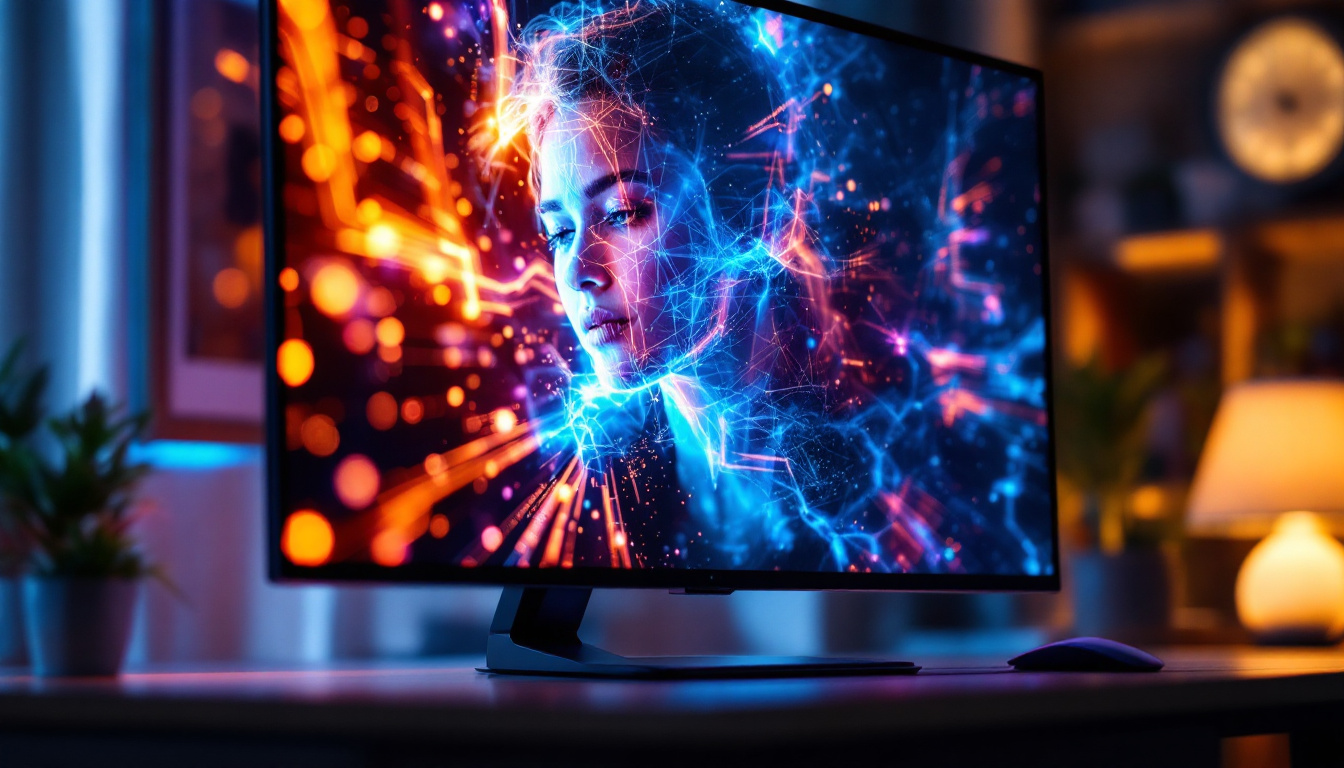In the modern world, touch screens have become an integral part of our daily lives. From smartphones to tablets and even large display screens, the technology behind these devices is fascinating. At the heart of this technology lies the touch screen and digitizer, which work together to create an interactive user experience. This article will delve into the intricacies of touch screens, digitizers, and LED displays, providing a comprehensive understanding of how they function and their significance in today’s technology landscape.
Understanding Touch Screens
Touch screens are interfaces that allow users to interact with a device through touch. They have revolutionized the way we engage with technology, making it more intuitive and user-friendly. There are various types of touch screen technologies, each with its own advantages and applications.
Types of Touch Screen Technologies
There are primarily four types of touch screen technologies: resistive, capacitive, infrared, and optical. Each type has unique characteristics that make it suitable for different applications.
Resistive touch screens are made of multiple layers, including a flexible top layer and a conductive bottom layer. When pressure is applied to the top layer, it makes contact with the bottom layer, registering a touch. This technology is cost-effective and works well with styluses or gloved hands, making it ideal for industrial applications. They are often used in environments where durability is essential, such as in kiosks, ATMs, and medical devices, where users may not always have bare fingers to interact with the screen.
Capacitive touch screens, on the other hand, use the electrical properties of the human body to detect touch. These screens are more responsive and support multi-touch gestures, making them popular in smartphones and tablets. They provide a smoother user experience but may not function well with gloves or styluses unless they are specifically designed for capacitive screens. The widespread adoption of capacitive technology has led to innovations such as gesture-based controls and the ability to detect multiple touches simultaneously, enhancing the interactivity of applications.
How Touch Screens Work
The operation of a touch screen involves a combination of hardware and software components. When a user touches the screen, the touch sensor detects the location of the touch and sends this information to the device’s processor. The processor then interprets the touch input and executes the corresponding action, such as opening an app or scrolling through a webpage.
In capacitive touch screens, the screen is coated with a transparent conductive material. When a finger touches the screen, it creates a change in the electric field, which is detected by the sensors. In resistive screens, the pressure applied causes the layers to make contact, allowing the device to register the touch. Additionally, infrared touch screens use an array of infrared light beams across the screen surface; when an object interrupts the beams, the system can pinpoint the location of the touch. This technology is often used in large displays and interactive whiteboards, where precision and durability are key.
Moreover, the integration of touch screen technology into everyday devices has transformed user interfaces across various sectors. In retail, touch screens facilitate self-service kiosks that streamline transactions, while in education, interactive touch panels enhance learning experiences by allowing students to engage directly with digital content. As touch screen technology continues to evolve, advancements such as haptic feedback and pressure sensitivity are paving the way for even more immersive and responsive interactions, blurring the lines between physical and digital experiences.
The Role of Digitizers
A digitizer is a crucial component of touch screen technology, converting the physical touch into digital signals that a device can understand. It acts as a bridge between the touch screen and the device’s operating system, ensuring that the user’s input is accurately interpreted.
What is a Digitizer?
A digitizer is essentially a device that converts analog signals into digital data. In the context of touch screens, it detects the location and pressure of a touch and translates this information into a format that the device can process. This process is vital for ensuring that touch inputs are registered accurately and efficiently.
Digitizers can be integrated into the touch screen itself or be a separate component. Integrated digitizers are common in smartphones and tablets, where space is limited. Separate digitizers may be used in larger displays or specialized equipment, providing flexibility in design and functionality. For instance, in professional graphic tablets, separate digitizers allow for enhanced pressure sensitivity and tilt recognition, which are essential for artists and designers who rely on precision in their work.
How Digitizers Work
Digitizers work by employing various sensing technologies, such as resistive or capacitive methods, to detect touch inputs. Once a touch is detected, the digitizer processes the information and sends it to the device’s processor. This allows for real-time interaction, enabling users to navigate applications, select options, and perform various tasks with ease.
The accuracy and responsiveness of a digitizer are critical for providing a seamless user experience. High-quality digitizers can detect subtle touches and gestures, allowing for precise control over applications and interfaces. Moreover, advancements in digitizer technology have led to the development of multi-touch capabilities, enabling users to perform complex gestures, such as pinch-to-zoom or swipe, that enhance the overall functionality of touch devices. This evolution has transformed how users interact with technology, making it more intuitive and engaging.
Additionally, the integration of digitizers with haptic feedback systems has further enriched the user experience. When a user interacts with a touch screen, the feedback provided by haptic technology can simulate the sensation of pressing a physical button, adding a tactile dimension to digital interactions. This combination of visual and tactile feedback not only improves usability but also fosters a deeper emotional connection between users and their devices, making digital interactions feel more natural and satisfying.
LED Displays: The Visual Component
While touch screens and digitizers facilitate user interaction, LED displays serve as the visual component of many devices. LED (Light Emitting Diode) displays are known for their vibrant colors, energy efficiency, and slim profiles, making them a popular choice for a wide range of applications.
What is an LED Display?
An LED display is a flat panel display that uses light-emitting diodes as pixels to produce images and videos. These displays are commonly found in televisions, computer monitors, and digital signage. The technology behind LED displays allows for high brightness levels, excellent contrast ratios, and a wide color gamut, making them ideal for various environments.
LED displays can be categorized into two main types: direct-lit and edge-lit. Direct-lit LED displays have LEDs placed behind the entire screen, providing uniform brightness and better contrast. Edge-lit displays, on the other hand, have LEDs positioned along the edges of the screen, which can lead to uneven brightness but allows for thinner designs.
Advantages of LED Displays
One of the primary advantages of LED displays is their energy efficiency. Compared to traditional LCD displays, LED technology consumes significantly less power, making it an environmentally friendly option. Additionally, LED displays offer superior brightness levels, making them suitable for use in well-lit environments.
Another benefit is their longevity. LED displays have a longer lifespan than traditional displays, reducing the need for frequent replacements. This durability, combined with their vibrant colors and sharp images, makes them a preferred choice for both consumers and businesses alike.
The Integration of Touch Screens, Digitizers, and LED Displays
The combination of touch screens, digitizers, and LED displays has transformed the way users interact with technology. This integration allows for intuitive navigation, enhanced user experiences, and visually stunning interfaces.
Applications Across Industries
Touch screens and LED displays are used across various industries, including retail, healthcare, education, and entertainment. In retail, interactive displays enhance customer engagement, allowing shoppers to browse products and make purchases seamlessly. In healthcare, touch screens enable medical professionals to access patient information quickly and efficiently.
In education, interactive whiteboards equipped with touch screens facilitate collaborative learning experiences, while in entertainment, LED displays provide immersive visual experiences in cinemas and gaming environments. The versatility of this technology makes it an invaluable asset across multiple sectors.
Future Trends in Touch Screen and Display Technologies
The future of touch screen and display technologies looks promising, with ongoing advancements aimed at improving functionality and user experience. Innovations such as flexible displays, enhanced multi-touch capabilities, and improved haptic feedback are on the horizon. These developments will further blur the lines between physical and digital interactions, creating more immersive experiences for users.
Additionally, the integration of artificial intelligence (AI) into touch screen interfaces is expected to enhance user interactions by providing personalized experiences and predictive capabilities. As technology continues to evolve, the possibilities for touch screens, digitizers, and LED displays are boundless.
Conclusion
Touch screens, digitizers, and LED displays have fundamentally changed the way we interact with technology. Understanding the intricacies of these components reveals the sophistication behind the devices we use daily. As technology continues to advance, the integration of these elements will only become more refined, paving the way for even more innovative applications and user experiences.
In a world where technology is constantly evolving, staying informed about these advancements is crucial. The future holds exciting possibilities for touch screen and display technologies, promising to enhance our interactions with the digital world in ways we have yet to imagine.
Discover the Future of Visual Experience with LumenMatrix
As you embrace the innovative world of touch screens, digitizers, and LED displays, take your visual experience to the next level with LumenMatrix. Our commitment to excellence in LED display technology ensures that your message shines with unparalleled clarity and impact. From captivating Indoor LED Wall Displays to dynamic Outdoor LED Wall Displays, and from versatile Vehicle LED Displays to engaging LED Sports Displays, LumenMatrix offers a comprehensive suite of solutions tailored to your needs. Elevate your brand visibility and audience engagement by exploring our full range of LED display modules, including our revolutionary LED Transparent Display. Check out LumenMatrix LED Display Solutions today and join the forefront of digital signage innovation.































